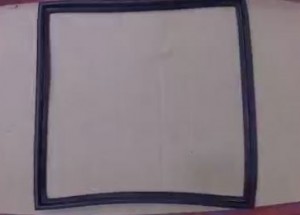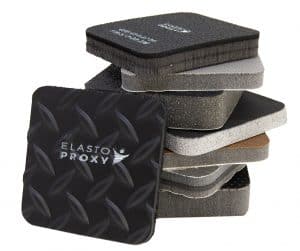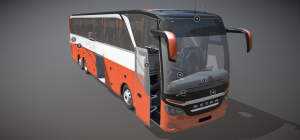 Rubber hatch seals for military vehicles don’t just keep out wind, water, dirt, and mud. They need to withstand extreme temperatures and various weather conditions. Hatch seals must avoid compression set, too. If a vehicle’s hatch causes a rubber seal to over-compress, the part won’t provide proper sealing. Ultimately, this permanent deformation creates a gap and causes seal failure. That’s bad news for military vehicles and the highly-trained personnel who operate them.
Rubber hatch seals for military vehicles don’t just keep out wind, water, dirt, and mud. They need to withstand extreme temperatures and various weather conditions. Hatch seals must avoid compression set, too. If a vehicle’s hatch causes a rubber seal to over-compress, the part won’t provide proper sealing. Ultimately, this permanent deformation creates a gap and causes seal failure. That’s bad news for military vehicles and the highly-trained personnel who operate them.
In this case study from Elasto Proxy, you’ll learn how we solved a sealing challenge for a manufacturer of military vehicles. The rubber hatch seals that we supply resist over-compression and demonstrate the value that we add to defense contracts. For our 25 years, Elasto Proxy has been an important link in the military supply chain. Elasto Proxyalso holds a Controlled Good Certificate (CGC) and works closely with trade groups such as the Canadian Association of Defense and Security Industries (CADSI).
From Hatch Seal Failure to Hatch Seal Success
When a manufacturer of military vehicles asked Elasto Proxy about a replacement hatch seal, our technical team observed the effects of compression set firsthand. While touring a military base in North America, our solutions providers saw how a neoprene seal had failed and allowed dirt to accumulate inside of a ground vehicle. Armor plating protects military personnel from IED blasts, but this neoprene seal couldn’t even stop airborne debris.
Compound Selection for Rubber Hatch Seals
 Solving this sealing challenge began with choosing the right rubber. Neoprene offers an excellent balance of material properties, but silicone sponge provides greater compression set resistance. Plus, silicone sponge resists water, ozone, sunlight, and a wide range of temperature. Many different silicone elastomers are available, and some combine toughness with resistance to fuels, chemicals, and fire. Material costs and custom fabrication can also drive a hatch seal’s success.
Solving this sealing challenge began with choosing the right rubber. Neoprene offers an excellent balance of material properties, but silicone sponge provides greater compression set resistance. Plus, silicone sponge resists water, ozone, sunlight, and a wide range of temperature. Many different silicone elastomers are available, and some combine toughness with resistance to fuels, chemicals, and fire. Material costs and custom fabrication can also drive a hatch seal’s success.
For this project, the silicone sponge that Elasto Proxy recommended had enough “memory” so that the hatch seals could rebound to their original thickness, even at higher temperatures. Importantly, this silicone rubber also promoted seal quality without over-engineering the part. Military callouts and minimum order quantities (MOQs) can increase project costs, so it pays to pick a partner like Elasto Proxy who can identify a less expensive commercial product that’s appropriate.
Custom Fabrication for Rubber Hatch Seals
Custom fabrication was also part of the solution. Elasto Proxy’s water jet cutter was the perfect platform for converting 1/8”-thick strips of this silicone foam into precision-cut lengths. Unlike die cutting, water jet cutting makes fine, fast cuts without tooling. This contains costs, supports quick-turn prototyping, and makes water jet cutting a great choice for low-to-medium volume production. Water jet cutting doesn’t create mechanical stresses in the material either.
Taping, another gasket fabrication process, also adds value to hatch seals for military vehicles. By gluing the cut lengths end-to-end, Elasto Proxy met the vehicle manufacturer’s design and production requirements. We also delivered taped gaskets or glued gaskets that were ready-to-install. These peel-and-stick products support assembly line or field installation, and prove that we provide complete solutions to military sealing challenges.
Ready to Apply What You’ve Learned?
Do you need rubber hatch seals for military vehicles? Do you need other rubber or plastic parts instead? Since 1989, Elasto Proxy has been strengthening the defense supply chain with custom-fabricated quantities of high-quality, low-to-medium volume parts. To request a quote or for more information, contact us. You can also download our Compound Selection e-book.











